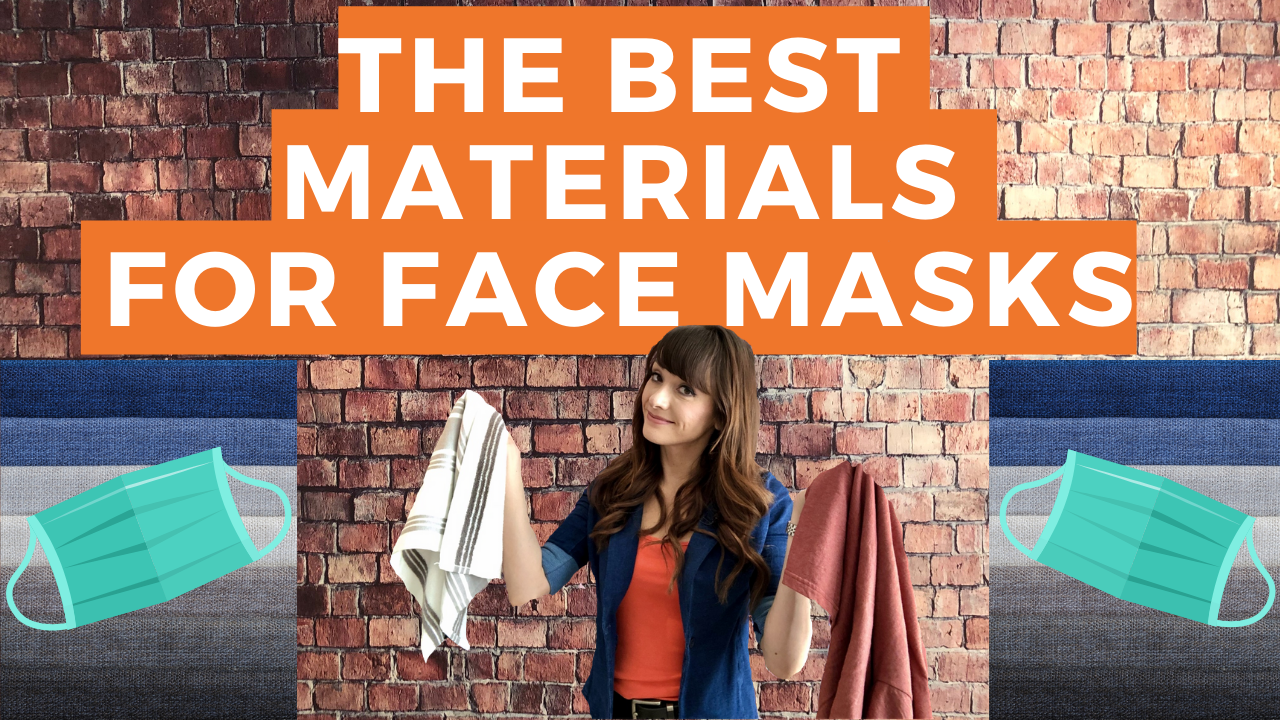The Best Materials for Face Masks According to Research
Last week, the U.S Centers for Disease Control and Prevention recommended that all Americans wear a facial cloth covering in public settings.
To preserve the supply of N95 and surgical masks for our health-care workers, the CDC also advised all Americans to make their own face coverings.
The question is…. What material can you use to make your mask, that will be the most effective?
To answer that question, we got up to date on the latest research and have found some answers for you. So, without further ado, let’s jump right into it.
Face Masks Research
After the surgeon general released the recommendation to wear face masks, Scott Segal, the Chairman of anesthesiology at Wake Forest Baptist Health, released the preliminary results of a research project he launched just two weeks ago to study the effectiveness of the materials in homemade masks.
According to Segal, of 13 different homemade cloth surgical masks, the #1 most effective material studied so far was quilter’s cotton. This material outperformed the others, filtering out 70-79% of small particles, including viruses. That’s even better than surgical masks, which Segal said filter out about 65% of particles. For reference, N-95 masks still offer the highest level of protection, filtering out 95% of particles.
According to the CDC, any mask is better than no mask and the mask can be made of something you already have around the house and any tight-woven cotton is a good choice. Place two layers of tightly woven fabric of 100 percent cotton with a thread count of at least 180, together to make a relatively effective mask.
Another option that tested well consisted of an outer layer of cotton and an inner layer of flannel.
The Best Fabrics for Face Masks Around the House
Trying to evaluate the best fabrics around the house to use? Well, according to Segal there are a few ways to figure out what the fabrics you have around home are.
Start with the fabrics that were rated by a group of Cambrige University researchers. Here are the fabrics they found had the best balance between filtration and breathability.
Testing Fabrics for Homemade Face Masks
#1 Perform a Light Test – Take the material and hold it up to a bright light. If you see the light between the fibers, it’s not a good filter.
#2 Test the Fabric’s Breathability – After you’ve found a few fabrics that prevent much light from passing through, hold the material up to your nose and mouth and see if you can actually breath through it. A good face mask has to have a balance of breathability and filtration. Some materials, such as vacuum cleaner bags, ranked higher in the study than tea towels, but weren’t easy enough to breathe through. Tea towels still performed better than T-shirts and pillow cases, Segal also mentioned that a thick jersey cotton, similar to what’s used in a stretchy shirt performed quite well.
#3 – Lastly, anything is better than nothing. Remember, face coverings are recommended in addition to social distancing. That means we still keep our six foot distance from one another but just include another protection to help flatten the curve of infections.
Care and Cleaning for Homemade Face Masks
Once you get home, carefully remove your face mask without touching other areas of your face and put it in the laundry before wearing it out again. The good news is, regular soap in detergent should be capable of destroying viruses so when it comes to washing your mask, you should be good to go.
For patterns see the list of resources below.
Since fabric by the yard generally requires longer shipping times, we have included links to sheets that are Amazon Prime eligible. Remember to wash fabrics before use.
- Cotton - https://amzn.to/2RpUE2M
- Flannel - https://amzn.to/3b0Q02K
- 400 Thread-Count Pillow Cases - https://amzn.to/2Rs1eWm
Patterns for face masks:
- https://www.cdc.gov/coronavirus/2019-ncov/prevent-getting-sick/diy-cloth-face-coverings.html
- https://healthcare.utah.edu/healthfeed/postings/2020/04/homemade-cloth-face-masks_web.pdf
- https://www.youtube.com/watch?v=Kd54zrv8nSg
- https://www.youtube.com/watch?v=e5btJ0_KTU8
Stay safe and stay healthy!




Leave a comment
All comments are moderated before being published.
This site is protected by hCaptcha and the hCaptcha Privacy Policy and Terms of Service apply.